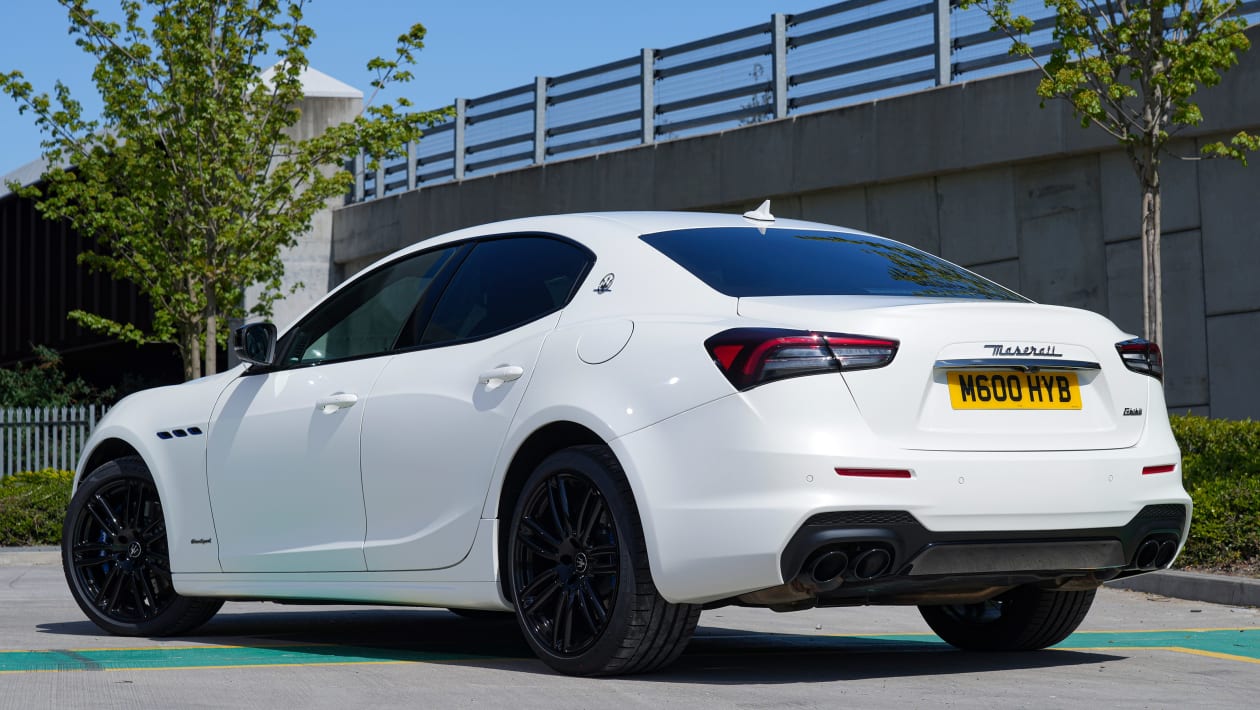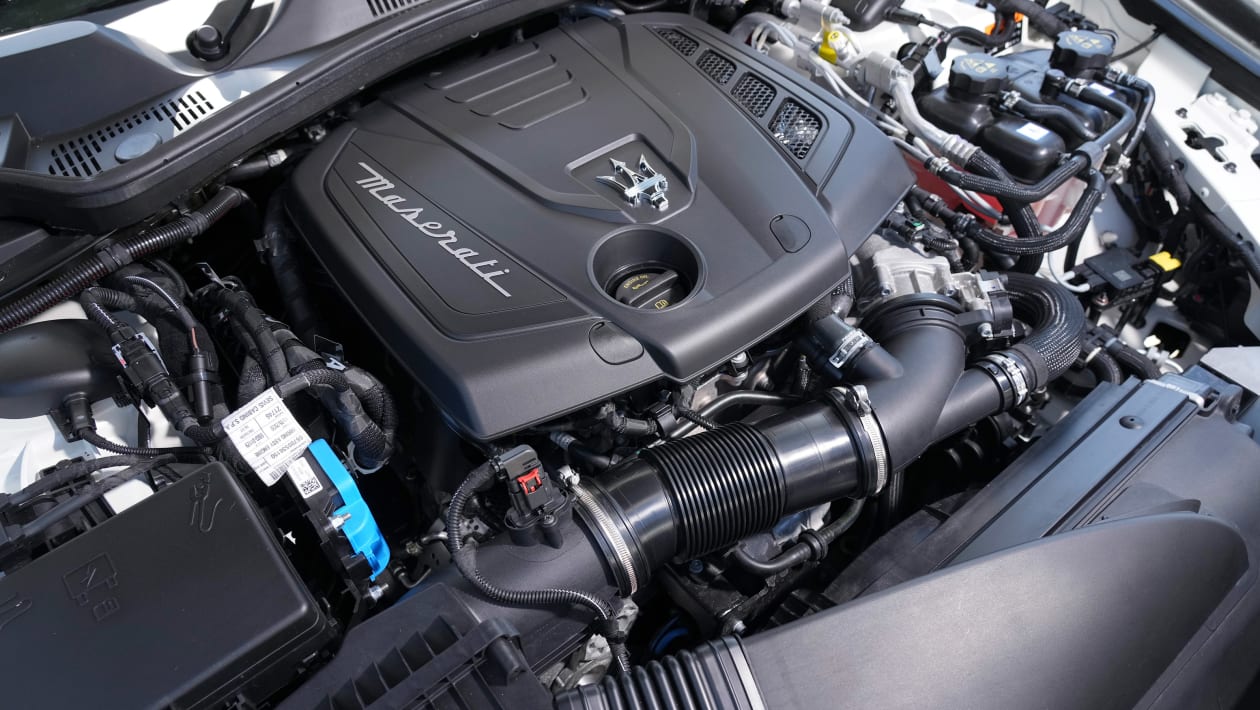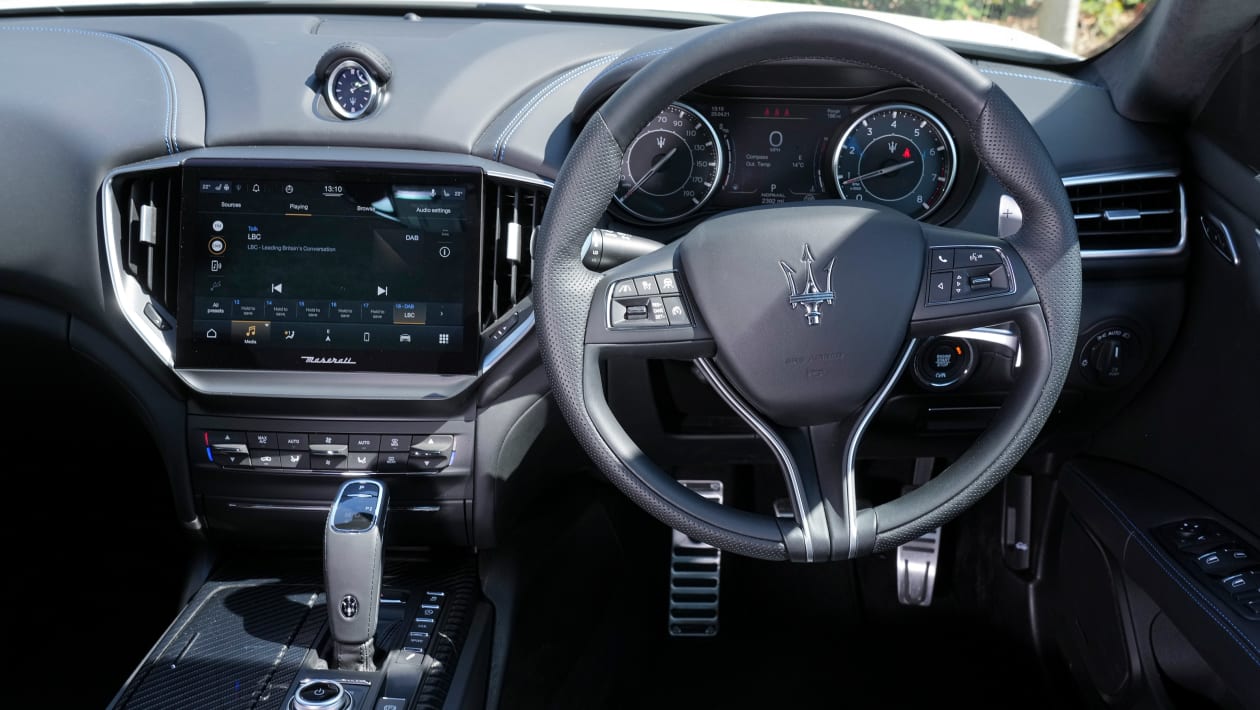
In the face of some talented rivals, the new 243kW Maserati Ghibli Hybrid falls short.
The Ghibli Hybrid is the first ever electrified Maserati, but don’t for one moment think of this car as Italy’s answer to a Tesla. Its hybrid powertrain is very much of the mild variety, and its resulting outputs don’t exactly rewrite the rulebook on electric vehicle technology.
Even so, it’s good to see Maserati making an attempt to keep up with the Joneses, so to speak, amid the industry’s increasingly frantic rush towards a greener future. At the same time, the Ghibli Hybrid Gransport would appear to retain plenty of the core values that have kept Maserati such a distinctive and desirable brand over the years – strong styling, an elegantly classy interior, keen if not quite ground-breaking performance and a rear-wheel drive chassis that’s aimed squarely at the enthusiast.

As such, it’s a good-looking mild-hybrid saloon with a large hit of brand desirability whose owner will definitely want to drive, rather than be driven in. Which is where it has the potential, reckons Maserati, to offer a strong alternative to the competition at this level, although to be clear this car is much more of a rival to the plug-in hybrid BMW 530e M Sport than it is a Tesla or a Polestar alternative. The electric tech it contains is simply nowhere near as advanced as it is in a full-blown EV, or even a plug-in.
Instead, the Ghibli Hybrid offers a retuned Fiat-Chrysler 2.0-litre four-cylinder petrol turbo engine that’s boosted by a 48-volt battery and a DC/DC converter to generate 243kW and 450Nm of torque. There’s also a belt starter-generator and what Maserati describes as an e-booster system that gives an extra hit of performance in Sport mode or, alternatively, better fuel consumption when not.
The 0-100kmh sprint takes an impressive 5.7 seconds, claims Maserati, while the top speed is 254kmh. Look more closely at the numbers, however, and you can’t help wondering whether Maserati has got its priorities the wrong way round in this instance, for while the Ghibli Hybrid’s basic performance appears sound – impressive even – its economy and emissions are anything but.

For a 2.0-litre mild-hybrid, emissions outputs of between 192-216g/km are unusually high, while the combined economy is well wide of the mark. There are plenty of petrol-only rivals that don’t just beat but annihilate these figures combined, and that’s before you consider the car’s real-world economy, which we measured at just 10.78L/100km on test, driven on a variety of roads, mostly at everyday speeds.
Such numbers would be far easier to swallow if the Ghibli Hybrid clawed back some ground with a rousing soundtrack, a beautifully designed and built interior, a lovely rear wheel-drive chassis and a strong dose of driver appeal. But sadly, this is not the case.
The ride is surprisingly poor on most roads (even the smoother ones) and the chassis feels clumsy beside the best rivals, both in terms of its refinement and its response.
The engine makes a not very nice noise at any revs but especially up at high revs, where it sounds strained and fails to deliver the kind of performance you’d associate with those on-paper acceleration claims. Even the packaging and build quality fall well shy of most rivals, most of which are at least as well equipped, roomier where it counts and cost a fair bit less.
In light of which it’s hard to draw a positive conclusion about the new Ghibli Hybrid. Truth is, when you take away the rousing petrol V6 and V8 engines that are normally found at the heart of this car – and replace these with a rather soulless and oddly inefficient four-cylinder mild-hybrid powertrain – the inherent weaknesses of the Ghibli platform become much more obvious, and far harder to overlook.

For once, Maserati’s undeniable brand strength is not enough on its own to save the Ghibli Hybrid from ignominy. Compared with increasingly excellent competition not just from Germany but also Japan, Sweden and the UK, predominantly in the form of Jaguar, the Ghibli Hybrid simply isn’t good enough. Which is a painful observation to make, but maybe one that Maserati should listen to through gritted teeth if it wants to survive for another 106 years.
On paper the new Ghibli Hybrid seems like a great way to keep Maserati relevant yet desirable in 2021. In reality, it’s something of a disappointment, with uncompetitive hybrid technology failing to provide either the economy or the emissions it needs to keep pace, nor the basic driver appeal of its best rivals. At which point the inherent weaknesses of the Ghibli platform become harder to forgive, such as a lack of genuinely decent rear seat space and surprisingly poor ride quality. It’s also expensive beside most key rivals without the build quality to back this up. Not one of Maserati’s finer moments.
Steve Sutcliffe




